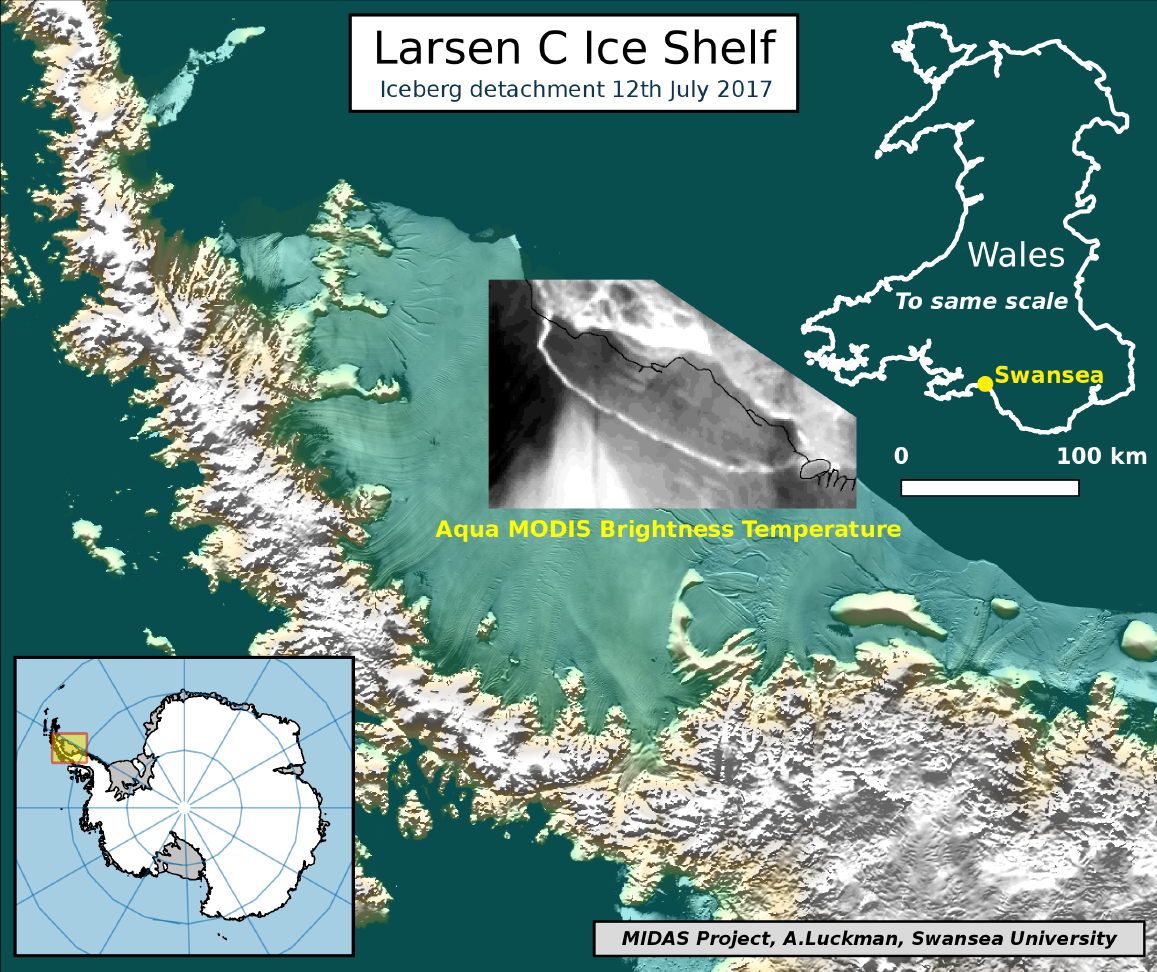
Massive Iceberg Finally Breaks Off: Antarctic Landscape ‘Changed Forever’

One of the biggest icebergs ever recorded has “finally” broken away from the Larsen C ice shelf in Antarctica, researchers studying the event announced.
The iceberg, which will likely be dubbed A68, weighs more than a trillion tonnes, has a volume twice that of Lake Erie, and is about 5,800 square kilometers in size—roughly the size of Delaware.
According to Project MIDAS, the UK-based Antarctic researchers observing the ice shelf, the calving occurred sometime between Monday and Wednesday.
The landscape of the Antarctic Peninsula has been “changed forever,” the researchers said. The calving leaves the Larsen C Ice Shelf reduced in area by more than 12 percent, its smallest size ever recorded.
The widening crack had been developing over the past year. Project MIDAS said last week that the massive iceberg was hanging onto the main shelf by just a 3-mile thread. “Multiple rift tips” had also formed, meaning a number of smaller icebergs could also splinter off.
“We have been anticipating this event for months, and have been surprised how long it took for the rift to break through the final few kilometers of ice. We will continue to monitor both the impact of this calving event on the Larsen C Ice Shelf, and the fate of this huge iceberg,” Professor Adrian Luckman of Swansea University and lead investigator of the project said.
“The iceberg is one of the largest recorded and its future progress is difficult to predict. It may remain in one piece but is more likely to break into fragments. Some of the ice may remain in the area for decades, while parts of the iceberg may drift north into warmer waters,” Luckman added.
The new configuration of Larsen C could potentially make it less stable. There’s a chance it could follow the example of its neighbor, Larsen B, which rapidly broke apart in 2002 after a similar rift-induced calving event in 1995, the researchers said.
“In the ensuing months and years, the ice shelf could either gradually regrow, or may suffer further calving events which may eventually lead to collapse—opinions in the scientific community are divided. Our models say it will be less stable, but any future collapse remains years or decades away,” Luckman said.
The iceberg will have no immediate impact on sea level since it was already floating before it calved. However, as these ice shelves disintegrate, the land-locked glaciers they hold back may begin sliding into the sea.
“Although this is a natural event, and we’re not aware of any link to human-induced climate change, this puts the ice shelf in a very vulnerable position,” explained Dr. Martin O’Leary, a Swansea University glaciologist and member of the MIDAS project team. “This is the furthest back that the ice front has been in recorded history. We’re going to be watching very carefully for signs that the rest of the shelf is becoming unstable.”

 233k
233k  41k
41k  Subscribe
Subscribe 